9.3: Exotics and Grapes
- Page ID
- 21621
\( \newcommand{\vecs}[1]{\overset { \scriptstyle \rightharpoonup} {\mathbf{#1}} } \)
\( \newcommand{\vecd}[1]{\overset{-\!-\!\rightharpoonup}{\vphantom{a}\smash {#1}}} \)
\( \newcommand{\id}{\mathrm{id}}\) \( \newcommand{\Span}{\mathrm{span}}\)
( \newcommand{\kernel}{\mathrm{null}\,}\) \( \newcommand{\range}{\mathrm{range}\,}\)
\( \newcommand{\RealPart}{\mathrm{Re}}\) \( \newcommand{\ImaginaryPart}{\mathrm{Im}}\)
\( \newcommand{\Argument}{\mathrm{Arg}}\) \( \newcommand{\norm}[1]{\| #1 \|}\)
\( \newcommand{\inner}[2]{\langle #1, #2 \rangle}\)
\( \newcommand{\Span}{\mathrm{span}}\)
\( \newcommand{\id}{\mathrm{id}}\)
\( \newcommand{\Span}{\mathrm{span}}\)
\( \newcommand{\kernel}{\mathrm{null}\,}\)
\( \newcommand{\range}{\mathrm{range}\,}\)
\( \newcommand{\RealPart}{\mathrm{Re}}\)
\( \newcommand{\ImaginaryPart}{\mathrm{Im}}\)
\( \newcommand{\Argument}{\mathrm{Arg}}\)
\( \newcommand{\norm}[1]{\| #1 \|}\)
\( \newcommand{\inner}[2]{\langle #1, #2 \rangle}\)
\( \newcommand{\Span}{\mathrm{span}}\) \( \newcommand{\AA}{\unicode[.8,0]{x212B}}\)
\( \newcommand{\vectorA}[1]{\vec{#1}} % arrow\)
\( \newcommand{\vectorAt}[1]{\vec{\text{#1}}} % arrow\)
\( \newcommand{\vectorB}[1]{\overset { \scriptstyle \rightharpoonup} {\mathbf{#1}} } \)
\( \newcommand{\vectorC}[1]{\textbf{#1}} \)
\( \newcommand{\vectorD}[1]{\overrightarrow{#1}} \)
\( \newcommand{\vectorDt}[1]{\overrightarrow{\text{#1}}} \)
\( \newcommand{\vectE}[1]{\overset{-\!-\!\rightharpoonup}{\vphantom{a}\smash{\mathbf {#1}}}} \)
\( \newcommand{\vecs}[1]{\overset { \scriptstyle \rightharpoonup} {\mathbf{#1}} } \)
\( \newcommand{\vecd}[1]{\overset{-\!-\!\rightharpoonup}{\vphantom{a}\smash {#1}}} \)
\(\newcommand{\avec}{\mathbf a}\) \(\newcommand{\bvec}{\mathbf b}\) \(\newcommand{\cvec}{\mathbf c}\) \(\newcommand{\dvec}{\mathbf d}\) \(\newcommand{\dtil}{\widetilde{\mathbf d}}\) \(\newcommand{\evec}{\mathbf e}\) \(\newcommand{\fvec}{\mathbf f}\) \(\newcommand{\nvec}{\mathbf n}\) \(\newcommand{\pvec}{\mathbf p}\) \(\newcommand{\qvec}{\mathbf q}\) \(\newcommand{\svec}{\mathbf s}\) \(\newcommand{\tvec}{\mathbf t}\) \(\newcommand{\uvec}{\mathbf u}\) \(\newcommand{\vvec}{\mathbf v}\) \(\newcommand{\wvec}{\mathbf w}\) \(\newcommand{\xvec}{\mathbf x}\) \(\newcommand{\yvec}{\mathbf y}\) \(\newcommand{\zvec}{\mathbf z}\) \(\newcommand{\rvec}{\mathbf r}\) \(\newcommand{\mvec}{\mathbf m}\) \(\newcommand{\zerovec}{\mathbf 0}\) \(\newcommand{\onevec}{\mathbf 1}\) \(\newcommand{\real}{\mathbb R}\) \(\newcommand{\twovec}[2]{\left[\begin{array}{r}#1 \\ #2 \end{array}\right]}\) \(\newcommand{\ctwovec}[2]{\left[\begin{array}{c}#1 \\ #2 \end{array}\right]}\) \(\newcommand{\threevec}[3]{\left[\begin{array}{r}#1 \\ #2 \\ #3 \end{array}\right]}\) \(\newcommand{\cthreevec}[3]{\left[\begin{array}{c}#1 \\ #2 \\ #3 \end{array}\right]}\) \(\newcommand{\fourvec}[4]{\left[\begin{array}{r}#1 \\ #2 \\ #3 \\ #4 \end{array}\right]}\) \(\newcommand{\cfourvec}[4]{\left[\begin{array}{c}#1 \\ #2 \\ #3 \\ #4 \end{array}\right]}\) \(\newcommand{\fivevec}[5]{\left[\begin{array}{r}#1 \\ #2 \\ #3 \\ #4 \\ #5 \\ \end{array}\right]}\) \(\newcommand{\cfivevec}[5]{\left[\begin{array}{c}#1 \\ #2 \\ #3 \\ #4 \\ #5 \\ \end{array}\right]}\) \(\newcommand{\mattwo}[4]{\left[\begin{array}{rr}#1 \amp #2 \\ #3 \amp #4 \\ \end{array}\right]}\) \(\newcommand{\laspan}[1]{\text{Span}\{#1\}}\) \(\newcommand{\bcal}{\cal B}\) \(\newcommand{\ccal}{\cal C}\) \(\newcommand{\scal}{\cal S}\) \(\newcommand{\wcal}{\cal W}\) \(\newcommand{\ecal}{\cal E}\) \(\newcommand{\coords}[2]{\left\{#1\right\}_{#2}}\) \(\newcommand{\gray}[1]{\color{gray}{#1}}\) \(\newcommand{\lgray}[1]{\color{lightgray}{#1}}\) \(\newcommand{\rank}{\operatorname{rank}}\) \(\newcommand{\row}{\text{Row}}\) \(\newcommand{\col}{\text{Col}}\) \(\renewcommand{\row}{\text{Row}}\) \(\newcommand{\nul}{\text{Nul}}\) \(\newcommand{\var}{\text{Var}}\) \(\newcommand{\corr}{\text{corr}}\) \(\newcommand{\len}[1]{\left|#1\right|}\) \(\newcommand{\bbar}{\overline{\bvec}}\) \(\newcommand{\bhat}{\widehat{\bvec}}\) \(\newcommand{\bperp}{\bvec^\perp}\) \(\newcommand{\xhat}{\widehat{\xvec}}\) \(\newcommand{\vhat}{\widehat{\vvec}}\) \(\newcommand{\uhat}{\widehat{\uvec}}\) \(\newcommand{\what}{\widehat{\wvec}}\) \(\newcommand{\Sighat}{\widehat{\Sigma}}\) \(\newcommand{\lt}{<}\) \(\newcommand{\gt}{>}\) \(\newcommand{\amp}{&}\) \(\definecolor{fillinmathshade}{gray}{0.9}\)Exotics
Improved transportation has led to the increasing availability (although sporadic in some areas) of exotic or unusual fresh fruits such as:
- Figs
- Persimmons
- Pomegranates
- Prickly pears
- Rhubarb
- Star fruits
Other exotic fruits, such as breadfruit, durian, feijoa and loquat, are still available only on a limited basis from specialty purveyors.
Figs
Figs are the fruit of ficus trees. They are small, soft, pear-shaped fruits with an intensely sweet flavor and rich, moist texture made crunchy by a multitude of tiny seeds. Fresh figs can be sliced and served in salads or with cured meats such as prosciutto. They can also be baked, poached, or used in jams, preserves, or compotes.
Dark-skinned figs, known as Mission figs, are a variety planted at Pacific Coast missions during the 18th century. They have a thin skin and small seeds and are available fresh, canned or dried. The white-skinned figs grown commercially include the White Adriatic, used principally for drying and baking, and the all-purpose Kadota. The most important domestic variety, however, is the Calimyrna. These large figs have a rich yellow color and large nutty seeds. Fresh Calimyrna figs are the finest for eating out of hand; they are also available dried.
For the best flavor, figs should be fully ripened on the tree. Unfortunately, fully ripened figs are very delicate and difficult to transport. Most figs are in season from June through October; fresh Calimyrna figs are available only during June.
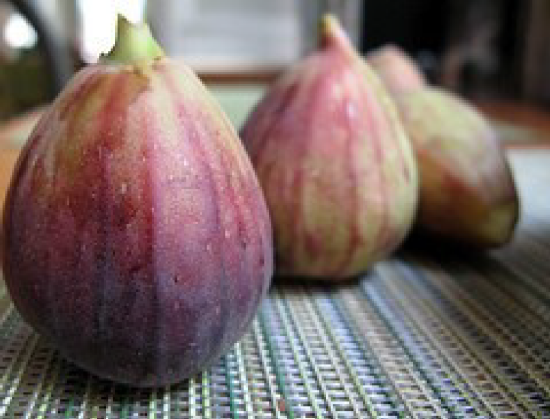
Gooseberries
Several varieties of gooseberry are cultivated for culinary purposes. One well-known variety is the European gooseberry, a member of the currant family that grows on spiny bushes in cool, moist regions of the Northern Hemisphere. Its berries can be relatively large, like a small plum, but are usually less than 1 inch (2.5 centimeters) in diameter. The skin, which is firm and smooth or only slightly hairy, can be green, white (actually gray-green), yellow or red. The tart berries contain many tiny seeds. They are eaten fresh or used for jellies, preserves, tarts and other desserts or as a traditional accompaniment to rich or fatty dishes, such as goose and mackerel. North American gooseberry varieties are smaller, perfectly round, and pink to deep red at maturity. Although more prolific, these varietals lack flavor and are generally considered inferior to European gooseberries.
Cape gooseberries, also known as ‘physalis’, ground cherries and ‘poha’, are unrelated to European and American gooseberries. Native to Peru, they became popular during the 19th century along the African Cape of Good Hope, for which they are named. Australia and New Zealand are currently the largest producers. Cape gooseberries are covered with a paper-thin husk or calyx. About the size of a cherry, they have a waxy, bright orange skin and many tiny seeds. Their flavor is similar to coconut and oranges, but tarter. Cape gooseberries may be eaten raw, made into jam or used in desserts. Fresh, they make an especially striking garnish.
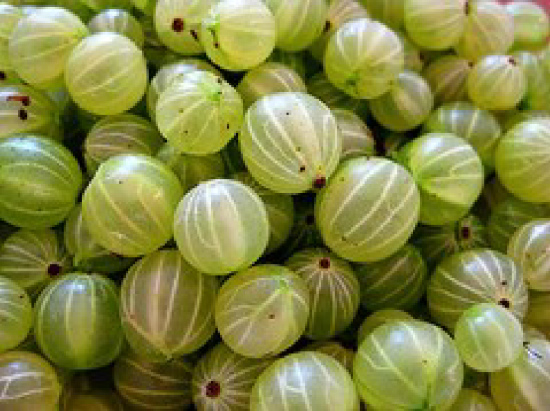
Guava
Guava are a small, oval or pear-shaped fruit with a strong fragrance and a mild, slightly grainy flesh. They are excellent in jams and preserves, and guava juice is available plain or blended with other tropical fruit juices. Guava paste, a thick, sliceable gel, is a popular treat throughout Central America and the Caribbean. Guava will ripen if stored at room temperature and should be slightly soft and fully ripened for the best flavor.
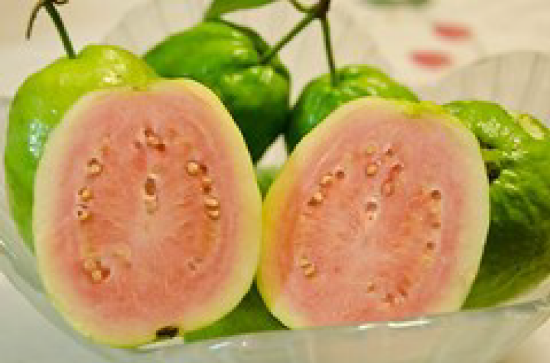
Lychees
The lychee, also spelled litchi or leechee, is the fruit of a large tree native to southern China and Southeast Asia. The fruits, which grow in clusters, are oval to round, red and about 1 inch (2.5 centimeters) in diameter. The tough outer skin encloses juicy, white, almost translucent flesh and one large seed. Neither the skin nor the seed are edible. The fruit travels well and is now cultivated in Florida and Hawaii, so supplies are relatively stable. Lychees are eaten fresh out of hand or juiced, and are widely available canned or dried. Fresh lychees are mild but sweet with a pleasant aroma.
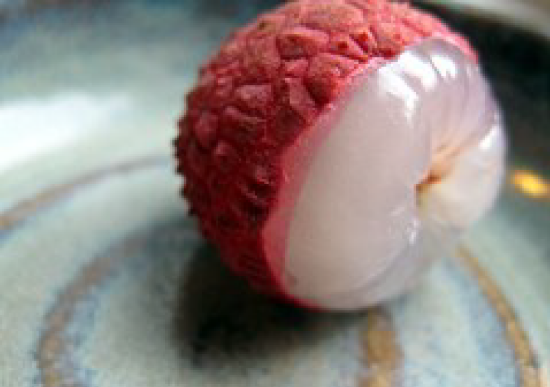
Mangosteens
The mangosteen, another native of Southeast Asia, is cultivated in Java, Sumatra and the Philippines. Mangosteens (no relation to mangos) are the size of a small orange, with flattened ends. They have a thick, hard, deep reddish-purple rind with hard white petal-shaped protrusions at the stem end. The interior flesh is snow-white and segmented, looking something like a mandarin orange. The texture is juicy and delicate with a slightly astringent flavor. Because the fruit must ripen on the tree and keeps only a short time. Mangosteens are usually eaten fresh, although canned fruit and mangosteen juice is available.
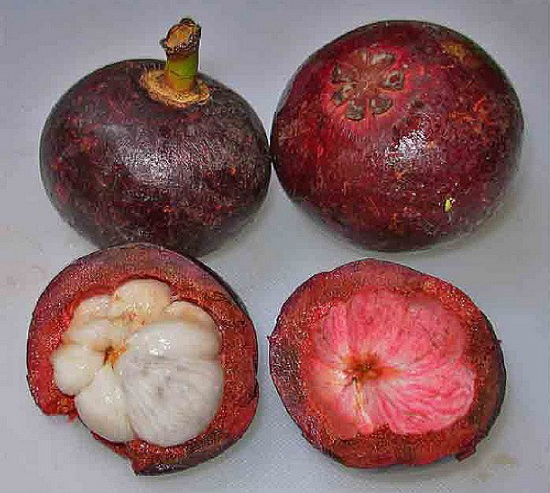
Persimmons
Persimmons, sometimes referred to as kaki or Sharon fruits, are a bright orange, acorn-shaped fruit with a glossy skin and a large papery blossom. The flesh is bright orange and jelly-like, with a mild but rich flavor similar to honey and plums. Persimmons should be peeled before use; any seeds should be discarded. Select bright orange fruits and refrigerate only after they are completely ripe. When ripe, persimmons will be very soft and the skin will have an almost translucent appearance.
Ripe persimmons are delicious eaten raw; halved and topped with cream or soft cheese; or peeled, sliced and added to fruit salads. Persimmon bread, muffins, cakes and pies are also popular. Under-ripe persimmons are almost inedible, however. They are strongly tannic with a chalky or cottony texture.
Persimmons are tree fruits grown in subtropical areas worldwide, although the Asian varieties- now grown in California-are the most common. Fresh persimmons are available from October through January.
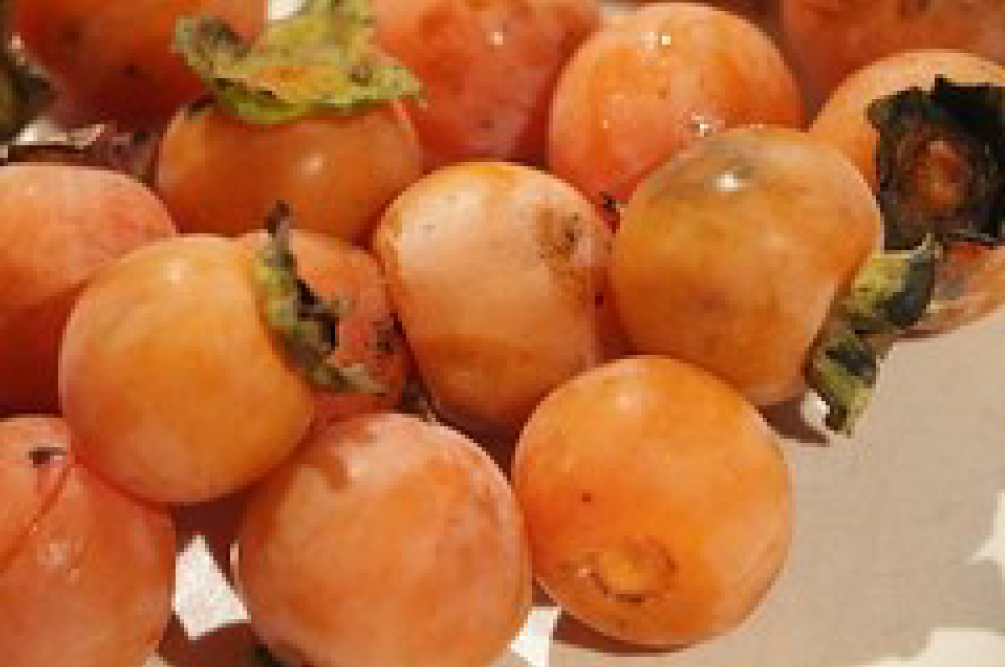
Pomegranates
An ancient fruit native to Persia (now Iran), pomegranates have long been a subject of poetry and a symbol of fertility. Pomegranates are round, about the size of a large orange, with a pronounced calyx. The skin forms a hard shell with a pinkish-red color. The interior is filled with hundreds of small, red seeds (which are, botanically, the actual fruits) surrounded by juicy reel pulp. An inedible yellow membrane separates the seeds into compartments. Pomegranates are sweet-sour, and the seeds are pleasantly crunchy. The bright red seeds make an attractive garnish. Pomegranate juice is a popular beverage in Mediterranean cuisines, and grenadine syrup is made from concentrated pomegranate juice.
Select heavy fruits that are not rock-hard, cracked, or heavily bruised. Whole pomegranates can be refrigerated for several weeks. Pomegranates are available from September through December; their peak season is in October.
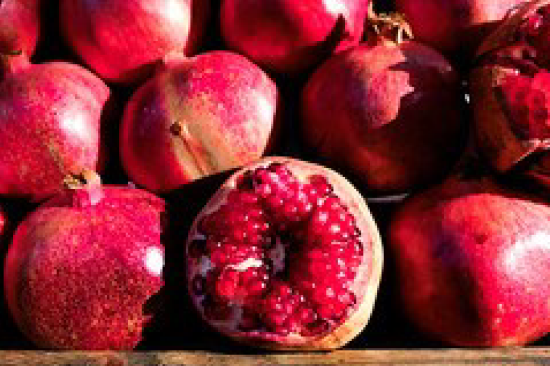
Prickly Pears
Prickly pear fruits, also known as cactus pears and Barbary figs, are actually the berries of several varieties of cactus. They are barrel- or pear-shaped, about the size of a large egg. Their thick, firm skin is green or purple with small sharp pins and nearly invisible stinging fibers. Their flesh is spongy, sweet and a brilliant pink-red, dotted with small black seeds. Prickly pears have the aroma of watermelon and the flavor of sugar water.
Once peeled, prickly pears can be diced and eaten raw, or they can be pureed for making jams, sauces, custards or sorbets, to which they give a vivid pink color. Prickly pears are especially common in Mexican and southwestern cuisines.
Select fruits that are full-colored, heavy and tender, but not too soft. Avoid those with mushy or bruised spots. Ripe prickly pears can be refrigerated for a week or more. Prickly pears are grown in Mexico and several southwestern states and are available from September through December.
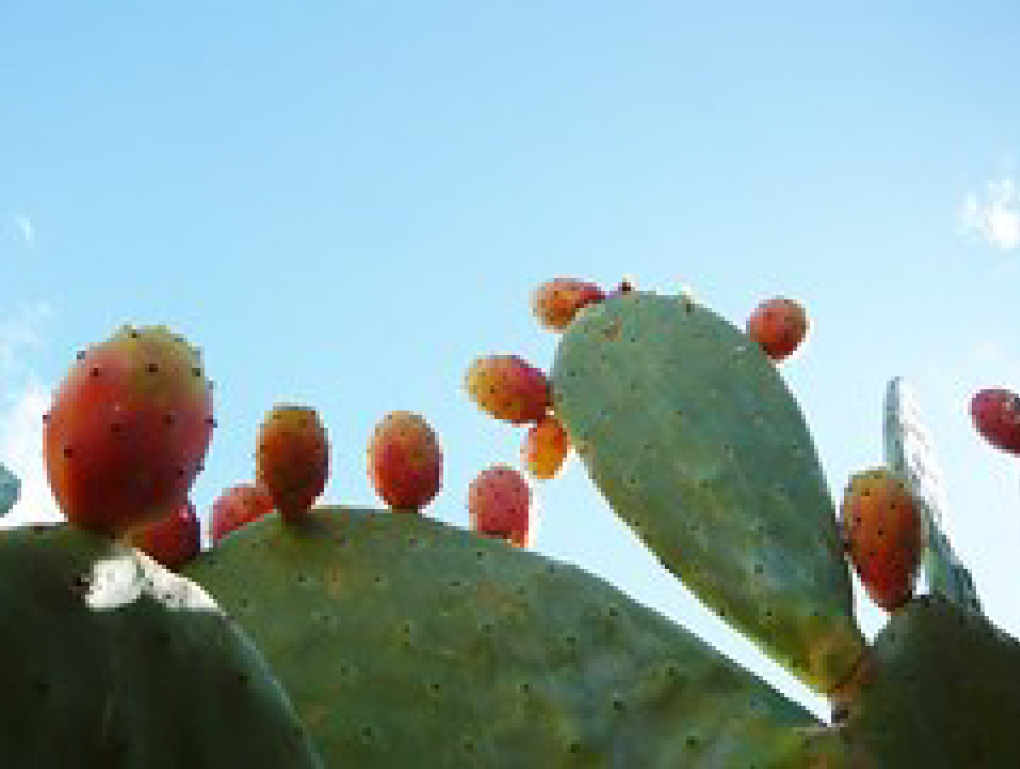
Rambutans
Rambutans, the fruit of a tree in the soapberry family, are closely related to lychees. Native to Malaysia, they are now cultivated throughout Southeast Asia. The bright red, oval fruit is about the size of a small hen's egg, and is covered with long, soft spines, hence the name "hairy" lychees. The interior has a white, lightly acidic pulp. Rambutans darken with age, so select brightly colored fruit with soft, fleshy spines. Rambutans are eaten fresh, used in preserves, and ice cream; they are also available canned.
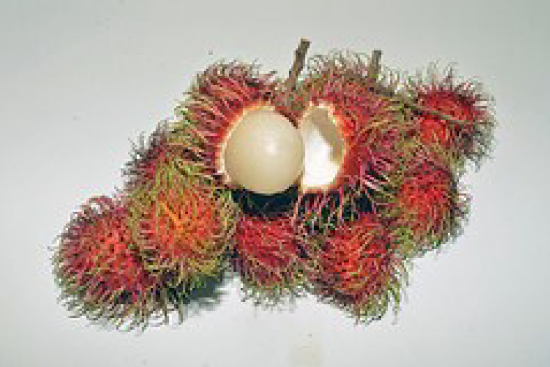
Rhubarb
Although botanically a vegetable, rhubarb is most often prepared as a fruit. A perennial plant, rhubarb grows well in temperate and cold climates. Only the pinkish-red stems are edible; the leaves contain high amounts of oxalic acid, which is toxic.
Rhubarb stems are extremely acidic, requiring large amounts of sugar to create the desired sweet-sour taste. Cinnamon, ginger, orange and strawberry are particularly compatible with rhubarb. It is excellent for pies, cobblers, preserves, or stewing. Young, tender stalks of rhubarb do not need peeling. When cooked, rhubarb becomes very soft and turns a beautiful light pink color.
Fresh rhubarb is sold as whole stalks, with the leaves removed. Select crisp, unblemished stalks. Rhubarb's peak season is during the early spring, from February through May. Frozen rhubarb pieces are readily available and are excellent for pies, tarts or jams.
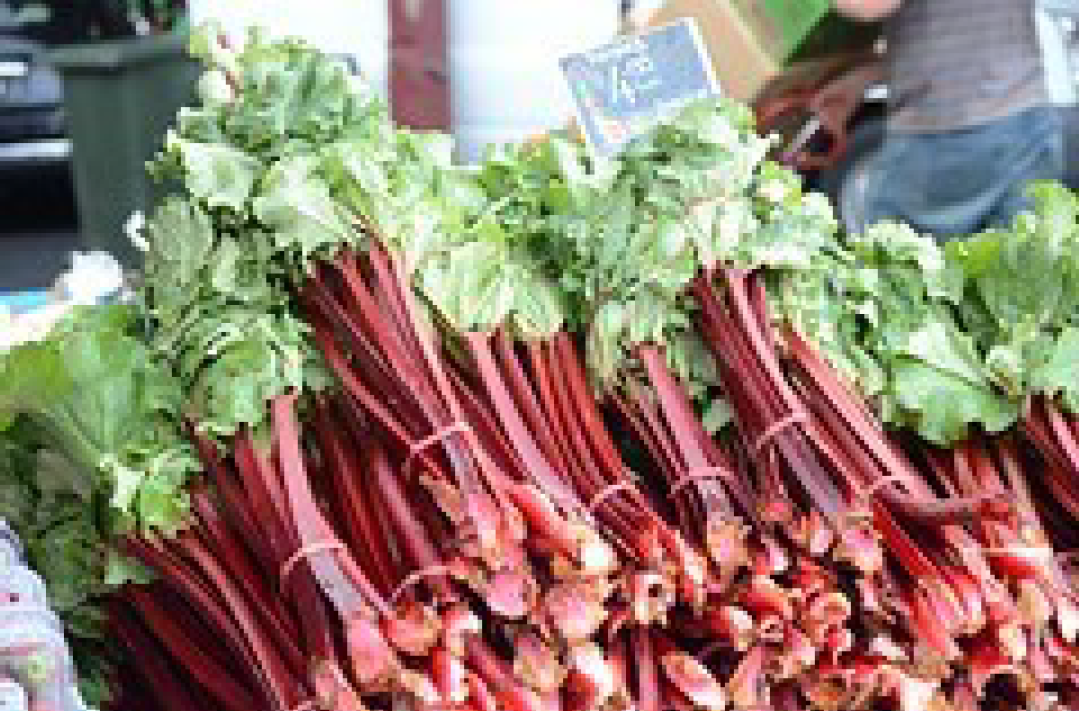
Star Fruit
Star fruits, also known as carambola, are oval, up to 5 inches (12.5 centimeters) long, with five prominent ribs or wings running their length. A cross-section cut is shaped like a star. The edible skin is a waxy orange-yellow; it covers a dry, paler yellow flesh. Its flavor is similar to that of plums, sweet but bland. Star fruits do not need to be peeled or seeded. They are most often sliced and added to fruit salad or used as a garnish. Unripe fruits can be cooked in stews or chutneys.
Color and aroma are the best indicators of ripeness. The fruits should be a deep golden-yellow and there should be brown along the edge of the ribs. The aroma should be full and floral. Green fruits can be kept at room temperature to ripen, then refrigerated for up to 2 weeks. Star fruits are cultivated in Hawaii, Florida and California, though some are still imported from the Caribbean. Fresh fruits are available from August to February.
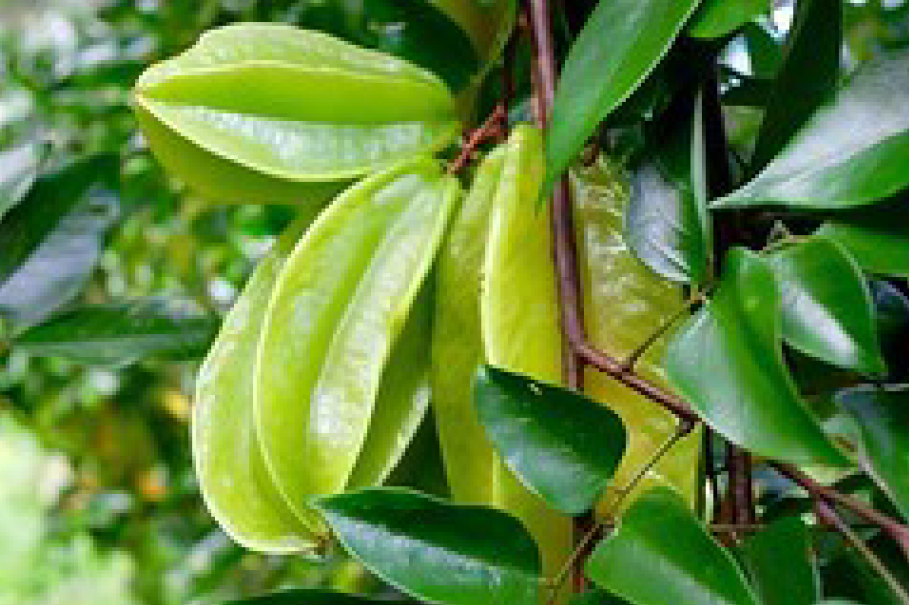
Grapes
Grapes are the single largest fruit crop in the world, due, of course, to their use in wine making. This section, however, discusses only table grapes, those grown for eating. Grapes are berries that grow on vines in large clusters. California is the world's largest producer, with more than a dozen varieties grown for table use. Grapes are classified by color as white (which are actually green) or black (which are actually reel). White grapes are generally blander than black ones, with a thinner skin and firmer flesh. The grape's color and most of its flavor are found in the skin. Grapes are usually eaten raw, either alone or in fruit salads. They are also used as a garnish or accompaniment to desserts and cheeses. Dried grapes are known as raisins; usually made from Thompson Seedless or Muscat grapes), currants (made from Black Corinth grapes and labeled Zante currants) or sultana s (made from sultana grapes).
Grapes are available all year because the many varieties have different harvesting schedules. Look for firm, unblemished fruits that are firmly attached to the stem. A surface bloom or dusty appearance is caused by yeasts and indicates recent harvesting. Wrinkled grapes or those with brown spots around the stem are past their prime. All grapes should be rinsed and drained prior to use.
Red Flame Grapes
Red Flame grapes are a seed less California hybrid, second only in importance to the Thompson Seedless. Red Flame grapes are large and round with a slightly tart flavor and variegated red color.
Thompson Seedless Grapes
The most commercially important table grapes are a variety known as Thompson Seedless, which are pale green with a crisp texture and sweet flavor. Their peak season is from June to November. Many are dried in the hot desert sun of California's San Joaquin Valley to produce dark raisins. For golden raisins, Thompson Seedless grapes are treated with sulfur dioxide to prevent browning, and then dried mechanically.
Other Table Grapes
Of the table grapes containing seeds, the most important varieties are the Concord, Ribier and Emperor. They range from light red to deep black, and all three are in season during the autumn. Concord grapes, one of the few grape varieties native to the New World, are especially important for making juices and jellies.
Virtually all the fine wine made in the world comes from varieties of a single grape species, Vitis vinifera. It is grown in the United States, Europe, South Africa, South America, the Middle East, Australia, and wherever fine wine is made.


